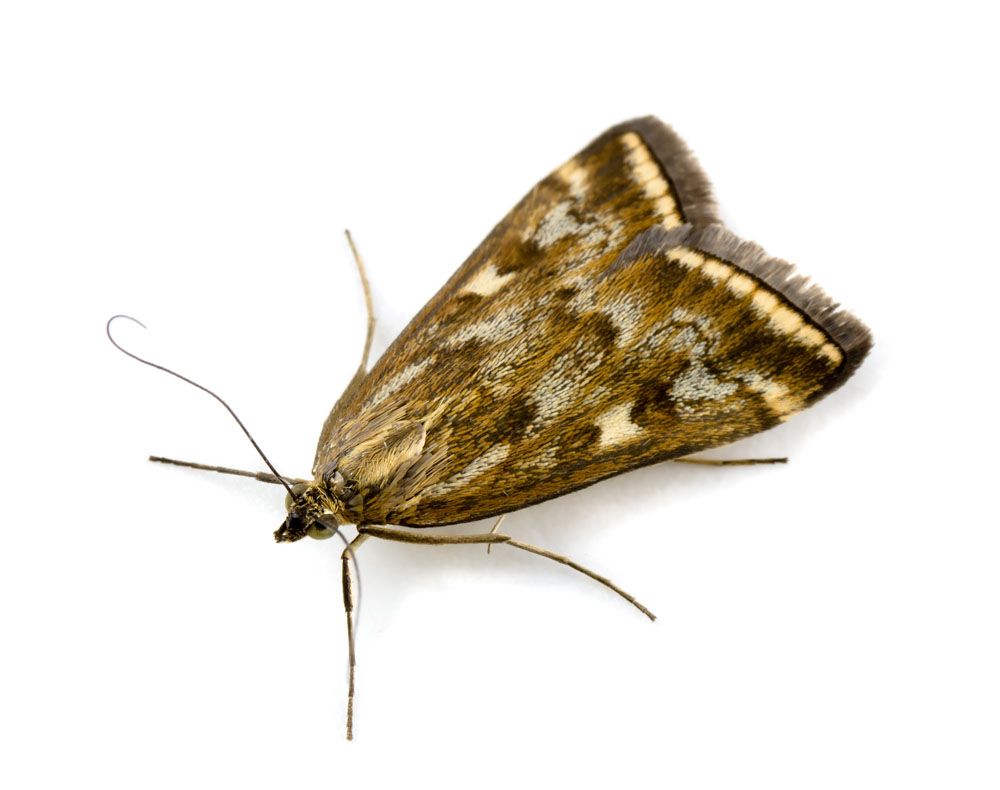
Beet Webworm – Loxostege stricticalis
Beet Webworm
Scientific Name: Loxostege sticticalis
Common Name: Beet webworm, sugar beet webworm
Appearance: Beet webworm is a typical moth, ranging in size from 24 to 29mm. It has a light olive green larva, not more than 40mm in length. The body of the larva is covered with black spots and lines, giving it a distinguished appearance. When disturbed, they tend to produce silk threads and hang from them, hence called webworms.
Host Plants or Food: Beet webworms are herbivore insects that feed on sugarbeet and tobacco. It also feeds on lettuce, beans, sorghum, and other common vegetables.
Territory: Throughout North America, Europe and Asia.
Mode of Damage: They are leaf chewers and start feeding on the mesophyll, leaving behind the leaf epidermis and veins. It can also damage the roots and stems, ultimately causing the death of the plant.
Habits and Life History:
Beet webworm is found in Greenlands and crop fields, primarily where sugar beet is grown.
The larvae can feed on the leaf tissues as well as make webs around the foliage and chew on the leaf later. The most common herbacious plants are mugwort, and sugar beet.
Adult moths fly during the spring, especially from May to September.
The larva hatches out from the eggs and feeds on the foliage to become an adult. It may show up to 5 instar larvae till the time it pupates.
